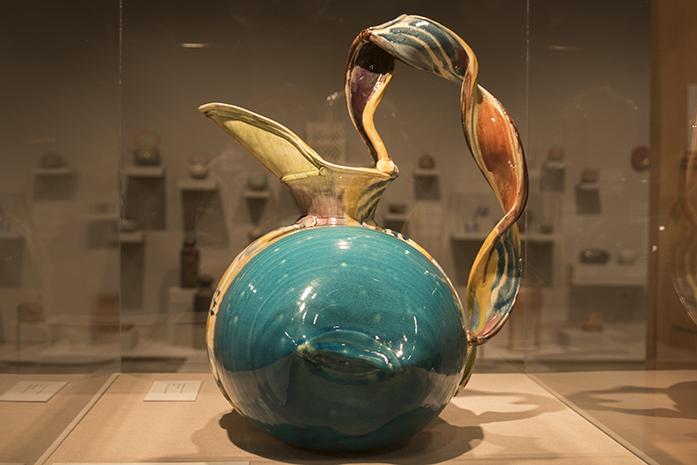Dale Fisher is the curator of a new exhibit about the importance of clay as an artistic medium.
By Claire Dietz
There has long been debate in the art world over the artistic potential of clay as a medium, and whether it deserves the same degree of visibility as its more popular peers, painting and drawing. Through a new exhibit at the IMU Black Box Theater, exploring the medium’s long history at the UI, Dale Fisher, the curator of education at the University of Iowa Museum of Art, hopes to bring a new perspective to the conversation.
“There was the idea that art was a serious endeavor, while crafting was useful,” he said. “For example, pottery has fallen into the craft category, but people who work in clay are sculpture-oriented.”
Fisher is the curator behind Clay Revisited: Traditions in Shards, on display in the Black Box Theater, running from now through Dec. 11.
With all the challenges of curating a ceramics exhibition aside, for Fisher there is the payoff of increasing the visibility of clay as an established artistic medium. He wants to allow visitors to come to their own conclusions about clay and its artistic merits.
“Historically, [the UI] has been on the forefront in the ceramics field,” he said. “With this idea of art as not just being painting, sculpture, or architecture — there’s a proliferation of media out there that are fighting for time. ”
”
The exhibition will feature ceramics, paintings, prints, and sculptures, some of which have been created by former students and faculty at the university.
Fisher also curated an exhibition at the Figge Art Museum in Davenport last year, which, he says, was good, but not enough.
“There were works I was referencing in my head, but now I get to do it over again and sdd ideas that I like,” he said. “Also, working on an exhibition, to me, has been like writing a research paper, but you’re doing it in 3D. You have your thesis statements, your ideas, and your examples.”
With this exhibit, he also wanted to focus on showing that the concerns of artists across various media are all the same.
“I wanted to pick artists who addressed concerns artists and painters addressed in their works, but wouldn’t do it in the traditional media.”
One of these artists featured in the exhibit is Benjamin Upchurch, a UI adjunct professor of ceramics. He sees clay as something “of the earth,” which resonated with his emotional attachment to the land.
“[My drive came from] being curious and wanting to emulate the people I admired, among them artists, craftsmen, musicians, and foresters,” Upchurch said. “They spoke my language.”
He sees the exhibit as part of a larger conversation about how to view the medium of clay alongside other, more widely accepted forms.
“Fisher has pointed to a framework to consider relationships between creative processes and ways of working in clay,” Upchurch said. “These connections distinguish work in the exhibit that embraces vessel traditions yet draws from painterly or sculptural approaches in its creation.”



